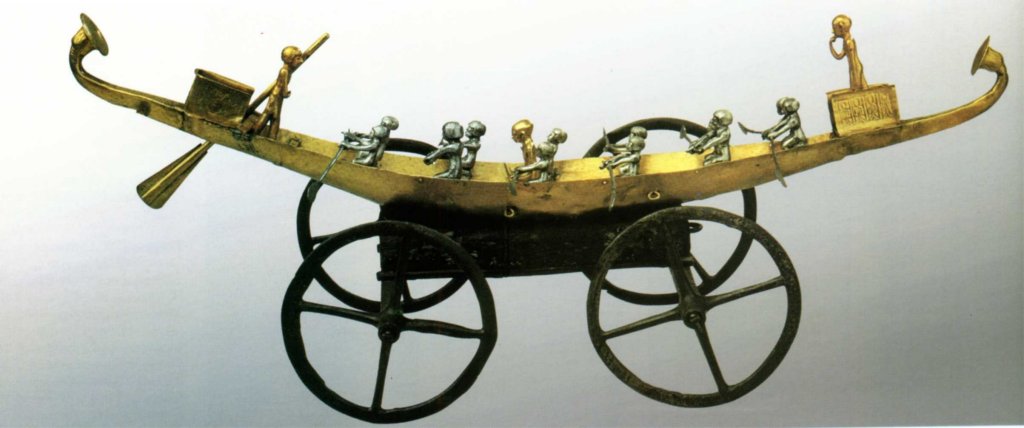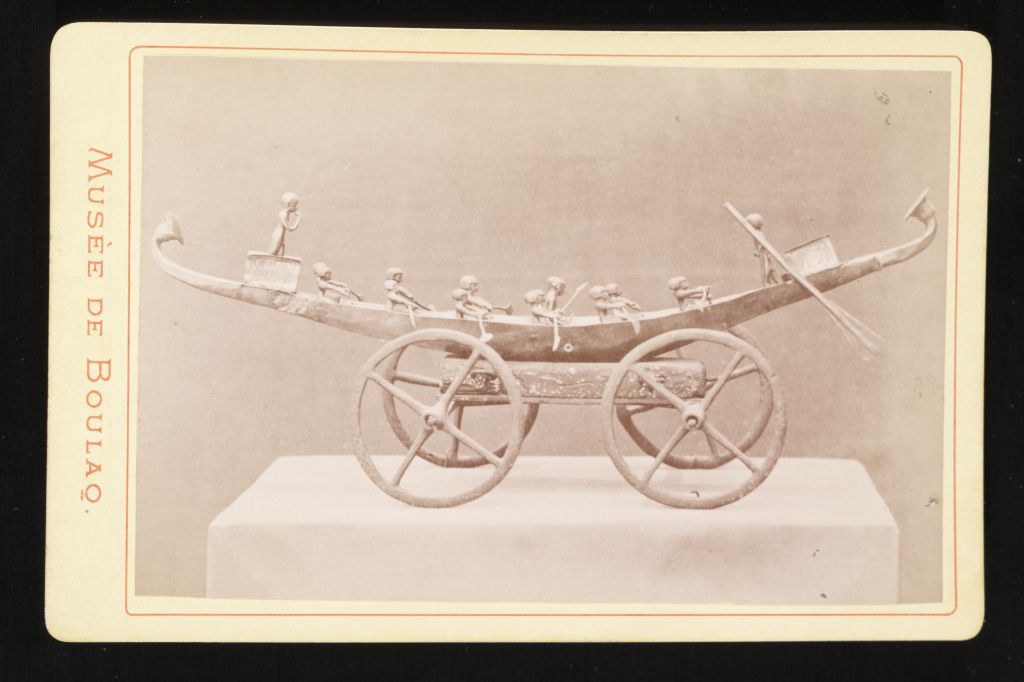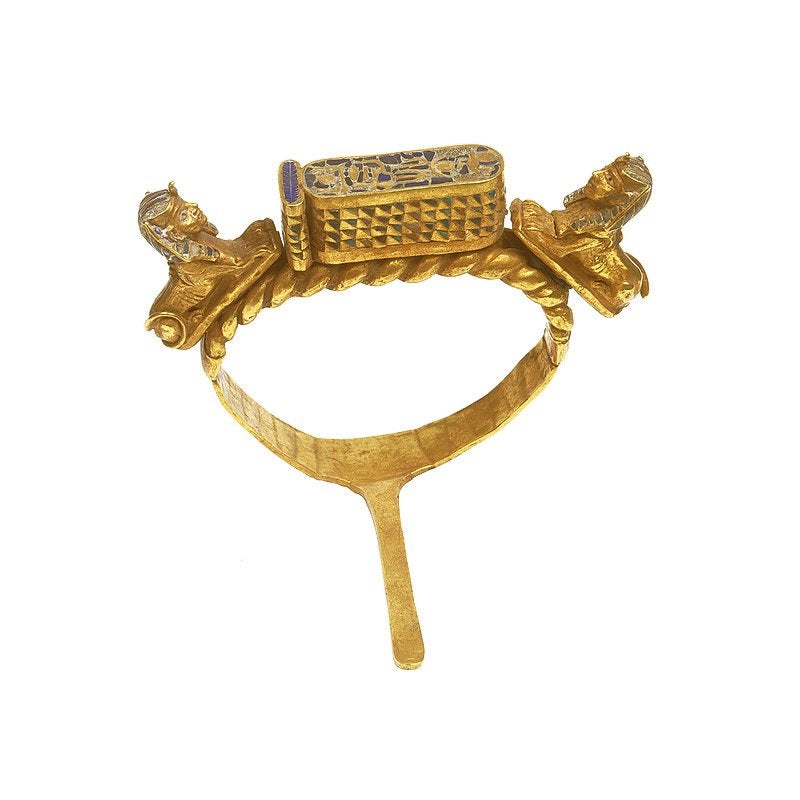This week for Women Crush Wednesday, we are going to talk about a Queen of the late Second Intermediate Period. Or maybe two Queens?
Which Ahhotep?
Like some of the other women we have talked about, there is a bit of confusion about who Ahhotep was. There have been a few theories over the years, but I’ll only be talking about the most recent theory, though it is not fully accepted by all scholars.
The main confusion lies in two separate coffins that have been found labeling a Queen Ahhotep. One was found in the royal cache in Deir el-Bahri (DB320) while the other was found in a tomb in Dra Abu el-Naga. I’ll talk about those below.

According to Dodson and Hilton (2004), Ahhotep I has been labeled as the wife of Seqenenre Tao II, a king in the late 17th Dynasty, and mother of rulers Kamose and Ahmose I. Then, Ahhotep II would be labeled as the wife of Kamose, the last ruler of the 17th Dynasty. This would make the relationship between the Ahhoteps, mother-in-law, and daughter-in-law, or mother and daughter (as Egyptian royal siblings married each other).
Ahhotep’s name means “Iah is satisfied” or “The moon is satisfied.”
Let’s talk about each Ahhotep’s life from what little information I could gather.
Ahhotep I, wife of Sequenenre Tao II
Ahhotep I was probably the daughter of Senakhtenre Ahmose, the 7th king of the 17th Dynasty, and Tetisheri. This Ahhotep would have lived circa 1560 to 1530 B.C.E. She was titled as the Great Royal Wife and an Associate of the White Crown Bearer. She was probably the sister and wife of Sequenenre Tao II, whose mummy was famously found with wounds to the face. It is believed that he died in battle against the Hyksos. This painting by Winifred M. Brunton from Hutchinson’s History of Nations (1915) is very interesting and shows the hypothetical retrieving of the Pharaoh’s body.

Because of the early death of her husband, it is believed that she became a regent for her son, Ahmose I. She was probably also the mother of Kamose, but it is unclear if she was also regent for him as he inherited the throne from his father and ruled before his brother, Ahmose I. Nonetheless, she was an important figure in the court during this time.
This is mostly recorded in a stela of Ahmose I in Karnak. He describes his mother as one who makes important decisions. She was,
“one who cares for Egypt. She has looked after her (ie. Egypt’s) soldier; she had guarded her; she had brought back her fugitives and collected together her deserters; she has pacified Upper Egypt, and expelled her rebels.”
It is unclear if she actually conducted or organized military engagement in Upper Egypt as this stela states. Ahhotep was probably also the mother to Queen Ahmose Nefertari. Ahmose-Nebetta, Ahmose Henutempet, and Ahmose-Tumerisi.
Interestingly the coffin and inscribed items found in the tomb in Dra Abu el-Naga used an early form of the Iah glyph. Iah is a lunar deity in the ancient Egyptian religion and the word means “Moon.” According to scholars the representation of the hieroglyph changed between years 18 and 22 of Ahmose I. Because these items used the early form of the word, it has been suggested that Ahhotep (at least the one buried in Dra Abu el-Naga) died sometime before year 20 of Ahmose I. In general, this would suggest that she is not the mother of Ahmose I.
Ahhotep II, wife of Kamose
She may be the daughter of Seqenenre Tao II and one of his consorts, possibly Tetisheri. She is thought to be the mother of Queen Ahmose-Sitkamose. It is unclear if she was the sister of Kamose or just his wife.
Kamose apparently died in battle, which allowed his brother Ahmose I to rise to power. Because in this theory, she was the sister/sister-in-law of Ahmose I, it doesn’t exactly support the claims of the king on the stela in Karnak.
There is very little known about the Ahhotep that might have been married to Kamose. This confusion proves to become even more difficult when we compare the two coffins and the tomb of Ahhotep. To continue with this theory of two sperate Ahhoteps, the coffin of Ahhotep I is thought to be the one found in Deir el-Bahri, and the coffin and tomb of Ahhotep II was found in Dra Abu el-Naga.
Coffin found in Cache in Deir el Bahri (DB320)

The coffin (CG 61006) found in DB320 in Deir el-Bahri depicts a Queen with a tripartite wig and a modius, which is a flat-topped cylindrical headdress or crown. The body of the coffin is yellow and covered in a rishi-design, otherwise known as feathers. The titles inscribed on the coffin include sAt-nsw. snt-nsw, Hmt-nsw-wrt, Xnmt-nfr-HDt, mwt-nsw or “King’s Daughter, King’s Sister, King’s Great Wife, Associate of the White Crown Bearer, and King’s Mother.”

If you remember from my discussion of DB320, this was a cache of many different mummies and sarcophagus that were reburied here during the 3rd Intermediate Period. The priests who did this didn’t keep the best records of which mummy was buried in which coffin. So, the mummy of High Priest of Amun, Pinedjem I was found in Ahhotep’s coffin. The original tomb for this coffin is not known, as no mummy of Ahhotep was found in that tomb.
Coffin found in Tomb in Dra Abu el-Naga
This tomb was rediscovered in 1859 by workmen employed by Auguste Mariette, who was the first Director of Egyptian Monuments. This tomb was not well recorded as Marinette was in Cairo at the time. Unfortunately, the coffin was immediately opened by the workers and the local governor, and the mummy was removed and unwrapped to search for jewelry and precious objects. The bandages and the mummy were then unfortunately lost.
The collection of finds were about to be transported to Qena to the Egyptian viceroy. Mariette was furious and technically highjacked the collection before it arrived. Theodule Deveria, an eyewitness, stated,
“… we saw the boat containing the treasures taken from the pharaonic mummy coming towards us. At the end of half an hour, the two boats were alongside each other. After some stormy words, accompanied by rather lively gestures, Mariette promised to one to toss him overboard, to another to roast his brains, to a third to send him to the gallery, and to a fourth to have him hanged. At last, they decided to place the box containing the antiquities on board, against a receipt.”


The coffin is heavily covered in gold leaf. It had a partially destroyed uraeus on the forehead and eyes were set in gold. The titles on this coffin included Hmt-nsw-wrt, Xnmt-nfr-HDt, or “King’s Great Wife and Associate of the White Crown Bearer.” Interestingly, this coffin was too large to have fit inside the coffin found in Deir el-Bahri, which helps support the theory that there are two Ahhoteps.
Contents of the Dra Abu el-Naga Tomb
Besides the coffin and the mummy, several pieces of jewelry and weapons were found within the tomb. Many of the items bore the name of Kamose, but more were inscribed with the name of Ahmose I.

An inscribed ceremonial ax blade was made of copper, gold, electrum, and wood. It was decorated with a Minion style griffin. Some of the scenes on these axes may depict the liberation of Egypt from the Hyksos. There is also an image of a smiting motif, which depicts the king holding the hair of an enemy about to strike him.

Three gold and bronze daggers found were made out of gold, electrum, enamel, and semi-precious stones. The name of epithets and Ahmose are inscribed on both the faces of the gold handle. One of these daggers was inscribed the names and epithets of King Ahmose, “Son of Ra, from his body, Ahmose, like Ra,” and may have been a gift from him.

A model of a boat (JE 4682) made out of gold and silver may be the most unique item found in the tomb. Boat models themselves are not unique, as the Egyptians believed that these were essential to the deceased for their journey in the afterlife. This boat was found on a miniature cart with wheels. It is less detailed than other models, but it is unique in the materials it is made out of, as most of these models were made out of wood. Below is an article about the boat.
Jewelry

Three golden flies attached to a chain were also found and are now in the Luxor Museum. These were awards that were usually given to people who served and acquitted themselves well in the army. These have been dubbed the “Order of the Golden Fly” and appeared in the early New Kingdom. Multiple versions of these necklaces have been found, and Ahhotep’s are the largest and finest. These were supposedly originally found around the neck of the mummy. These flies help support the theory that she was the mother of Ahmose who helped with the unification struggles. Two other smaller flies made out of electrum were also found.

A large wesekh or broad collar (JE 4725A) was also found, though it has been reconstructed today. It is made out of small golden elements representing baboons, quadrupeds, birds, crosses, bells, and geometric motifs. The clasps are in the shape of two hawk or falcon heads.

Similar to the pectorals of Psusennes I that we talked about on Monday, Ahhotep was also found with a pectoral (JE 4683). It is in the shape of a shrine with wavy lines on the bottom representing the primordial waters. King Ahmose I is shown standing on a boat with the gods Ra and Amun while being protected by two falcons. The gods are pouring water on the king, which represents the purification process during a coronation ceremony. Some scholars have speculated that this was made for the coronation of Ahmose I based on the representation.
A scarab pendant on a chain is inscribed with the name of Ahmose. The gold chain is formed out of wire closely plaited together and is very flexible. The ends terminate with the head of a waterfowl and small rings to secure the pieces together. The scarab in the center is made out of solid gold and inlaid with lapis lazuli.

A gold drop in the shape of a fig was apparently also found in the tomb, but I could not fin a modern photo of it. It was apparently inlaid with turquoise or blue paste.

This beaded bracelets (JE 4685) were found containing the names and titles of Ahmose I. They are composed of 30 rows of gold beads and semi-precious stones that alternate in a special design to form triangles and squares. The clasp is made out of two gold sheets that slide within each other to close the bracelet tight.

Hinged armlets (JE 4679) in the form of the vulture goddess Nekhbet were also found but they were not made with the best craftsmanship. They are inlaid with lapis lazuli and carnelian. These bear the name of Ahmose I and show some damage from use.
This last bracelet (JE 4784) is gold with lapis lazuli inlays. It was formed from two semicircles. One half depicts Geb, the god of the earth, wearing a double crown and seated on a throne. His hands rest on a sign of protection on the shoulder and arm of king Ahmose who is kneeling before him. This represents him being crowned and thus recognized as a descendant of divine pharaohs. The other half is engraved with a falcon and jackal-headed figure representing the souls of Pe and Nekhen, the mythical ancestors of the rulers of Egypt before unification.
There is also an armlet in the form of an archer’s bracer. This was originally thought to be a diadem as it was found on the mummy’s head in her hair. But it was probably worn on the upper arm as an armlet. Some scholars speculate that it actually belonged to Ahmose himself, as the diameter is wider than the other bracelets of Ahhotep. The vertical projection of the armlet means that it took the form of an archer’s bracer, protecting the inner wrist from the bowstring as it was released.
The burial collection suggests that this royal woman, closely associated with Ahmose and Kamose, was being commemorated for her military role, possibly her participation in an actual battle.
Though it is still unclear if there was two Queen Ahhoteps or just one, the evidence surrounding both of them indicate that they were powerful women in their own right.
Sources
https://en.wikipedia.org/wiki/Ahhotep_II
https://en.wikipedia.org/wiki/Ahhotep_I
https://mummipedia.fandom.com/wiki/Ahhotep_II
https://grbs.library.duke.edu/article/viewFile/1951/3141
https://thebiography.us/en/ahhotep-ii
http://ahhotep-egyptian-gods.blogspot.com/2011/02/ahhoteps-burial.html
http://ib205.tripod.com/pinudjem_1_cache.html
https://egypt-museum.com/post/160550105506/bead-bracelet-of-queen-ahhotep-i#gsc.tab=0
https://egypt-museum.com/post/630229530400997376/armlet-of-queen-ahhotep#gsc.tab=0
https://egypt-museum.com/post/626234255696166912/usekh-collar-of-queen-ahhotep-i#gsc.tab=0
https://egypt-museum.com/post/189187866421/silver-boat-of-ahhotep-i#gsc.tab=0
https://egypt-museum.com/post/177239688256/gold-dagger-of-ahmose-i-egypt-15th-century-bc#gsc.tab=0
https://egypt-museum.com/post/189168602311/queen-ahhotep-recovers-her-fallen-husband#gsc.tab=0
https://commons.wikimedia.org/wiki/Category:Queen_Aah-hotp
http://members.tripod.com/anubis4_2000/mummypages1/21A.htm#Pinudjem%20I
Photo Sources
Ceremonial Axe – Wikimedia Commons (Jesse)
Jewelry and weapons, Axes – Wikimedia Commons, Album du musée de Boulaq (1896)
Black and white photos – Wikimedia Commons, Théodule Devéria
Illustrated drawing of silver boat – Wikimedia Commons (Faucher-Gudin, from a photograph by Émile Brugsch)
Silver boat image – Musee de Boulaq (1881)
Face of coffin – Wikimedia Commons (Hans Ollermann)
Pharaoh Ahmose I slaying a Hyksos on the axe – Wikimedia Commons (Georges Émile Jules Daressy)
Axes – Flickr (Heidi Kontkanen)
Axe – Flickr (Jesse)
Axe – Wikimedia Commons (Ebers, Georg Moritz, 1837-1898)
Bracelet, Diadem, Gold Chain, drop – Wikimedia Commons (Encyclopædia Britannica (11th ed.), v. 15, 1911, “Jewelry,” p. 364, Figs. 7, 3, 6, 5.)
Rings and Little Lion – https://www.sciencedirect.com/science/article/pii/S1296207418304473
Coffin face – http://www.cesras.org/coffins/Ahhotep-CG61006.html
Full Coffin – http://www.touregypt.net/featurestories/coffins.htm
Armlet/Diadem – https://i.imgur.com/H1z1c5G.jpg
Scarab Necklace – Alamy Stock Photo
Coffin – http://antikforever.com/Egypte/Reines/Images/Iahhotep6b.jpg
Family Tree – https://en.wikipedia.org/wiki/Eighteenth_Dynasty_of_Egypt_family_tree
Boat model – Wachsmann 2013




















One comment